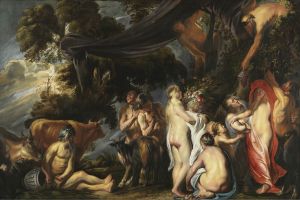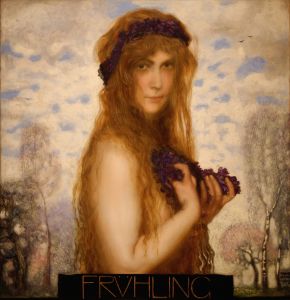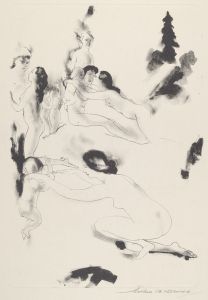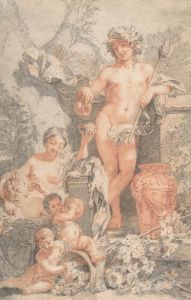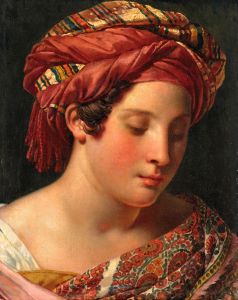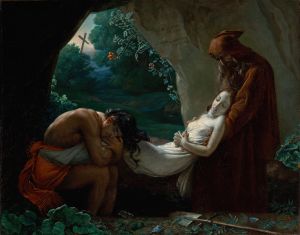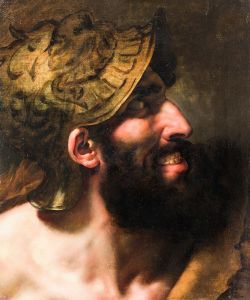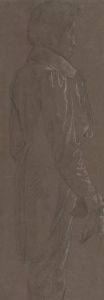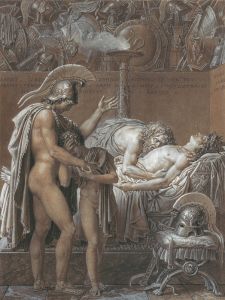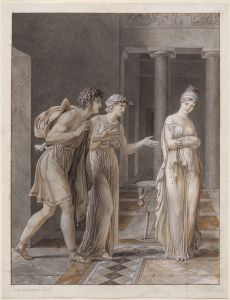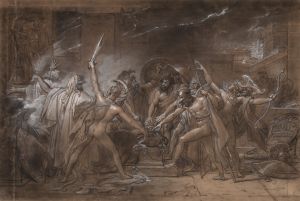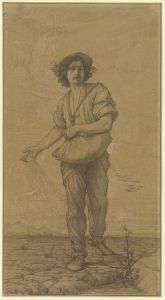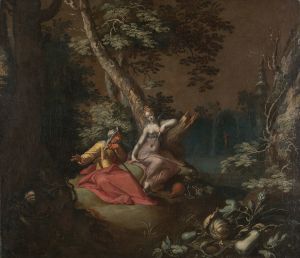
Invocation to the Divinities who preside over Agriculture from Virgil’s “Georgics”
A hand-painted replica of Anne Louis Girodet-Trioson’s masterpiece Invocation to the Divinities who preside over Agriculture from Virgil’s “Georgics”, meticulously crafted by professional artists to capture the true essence of the original. Each piece is created with museum-quality canvas and rare mineral pigments, carefully painted by experienced artists with delicate brushstrokes and rich, layered colors to perfectly recreate the texture of the original artwork. Unlike machine-printed reproductions, this hand-painted version brings the painting to life, infused with the artist’s emotions and skill in every stroke. Whether for personal collection or home decoration, it instantly elevates the artistic atmosphere of any space.
Anne-Louis Girodet-Trioson’s painting Invocation to the Divinities who preside over Agriculture from Virgil’s “Georgics” is a work inspired by the Roman poet Virgil’s didactic poem Georgics. Created by the French artist Girodet-Trioson, a prominent figure of the Neoclassical movement, the painting reflects the era's fascination with classical antiquity and its themes. The Georgics, written around 29 BCE, is a poetic treatise on agriculture, blending practical farming advice with mythological and philosophical reflections. Girodet’s work draws upon this literary source, specifically invoking the divine figures associated with agriculture as described in the poem.
The painting is notable for its Neoclassical style, characterized by its clarity, order, and emphasis on idealized forms. Girodet-Trioson was a student of Jacques-Louis David, one of the leading figures of Neoclassicism, and his works often exhibit a similar attention to detail and classical themes. In this painting, Girodet-Trioson likely sought to capture the reverence for nature and the divine that Virgil expressed in his text, aligning with the Enlightenment-era interest in rationality and the natural world.
The exact date of the painting’s creation is not widely documented, but it is consistent with Girodet-Trioson’s active period as an artist in the late 18th and early 19th centuries. The work demonstrates his skill in composition and his ability to translate literary themes into visual art. The figures in the painting are rendered with a sense of idealized beauty, typical of Neoclassical art, and the composition likely includes symbolic elements referencing agricultural deities or practices, as suggested by the title.
While the painting is less well-known compared to some of Girodet-Trioson’s other works, such as The Burial of Atala or Endymion Asleep, it remains an example of his engagement with classical literature and themes. The connection to Virgil’s Georgics situates the painting within a broader cultural context that valued the revival of Greco-Roman ideals during the Neoclassical period.
Further details about the painting’s current location, provenance, or reception are not readily available in historical records. As such, the information provided focuses on the known aspects of the artist, the literary inspiration, and the artistic style.





